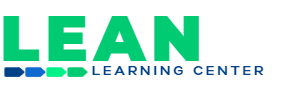When thinking about what is lean, a focus on the continuous improvement of the process is often emphasized. However, lean also means a continuous improvement of the person. In today’s fast-paced market, the best way to stay competitive is to create an environment that encourages and bolsters employee learning. Today’s market requires quick thinking leaders who are eager to grow and contribute to their field. Employees understand that education is the only way to move up at a given company, and they are quick to leave environments that don’t support their personal growth. With the ability to learn quite literally at our fingertips, it is on the employer to provide access to these opportunities to retain and empower their employees.
Employee Centered Development
Employees should be at the center of everything a company does. They are a company’s drivers of productivity, their champions of success, and their most substantial body of supporters. That said, their learning should be both intentional and personalized. The biggest mistake a company can make in a continuous learning environment is requiring all employees to follow the same learning regiment. Employee learning should be tailored to their needs, the needs of their department, and their learning style.
Furthermore, employee learning should not end when the workshop or seminar concludes. Instead, employees should be offered opportunities for continuous support and feedback in their learning. This feedback should center around their ability to apply their knowledge to real-world challenges.
Five Keys to Continuous Learning Environment
- Create a Common Vision: Before a continuous learning environment can be successful, it must be clearly defined and communicated across the company. The vision needs to apply to every employee, not just those at the top.
- Develop a Culture of Learning: It’s important to ensure that opportunities for learning will be equally available to all employees. Employees should be able to engage with a learning opportunity in a reasonable amount of time and on a semi-regular basis.
- Empower Personalized Growth: Employees shouldn’t have to fight or compete for available learning opportunities. Learning resources and expectations should be well-known to all employees. They should align with the company’s vision to deliver learning opportunities that help employees develop their specialized skillset.
- Encourage Internal Knowledge Sharing: Senior-level employees carry a wealth of knowledge and insight that entry-level employees are hungry to learn. For a company to thrive, top-level knowledge must trickle down to those who are just getting started in the field. Consider creating a mentorship program where folks with specialized knowledge can mentor and coach those they lead. You may also consider offering monthly workshops, or webinars lead by senior members of the team. Regardless of platform, top-level people are the best resource for knowledge dissemination at any company.
- Offer Online Opportunities: With the rise of technology came the rise of online learning platforms such as Coursera or Linda.com. Companies like these offer continuous learning opportunities for anyone to look for professional or personal development. Online learning is a fantastic way for employees to engage in learning and development outside the company walls without costing the company significant extra time or money.
Employees no longer fear the unknown of leaving a company for a new opportunity. Companies need to understand and develop their employee’s drive for knowledge acquisition to advance in their respective markets.




